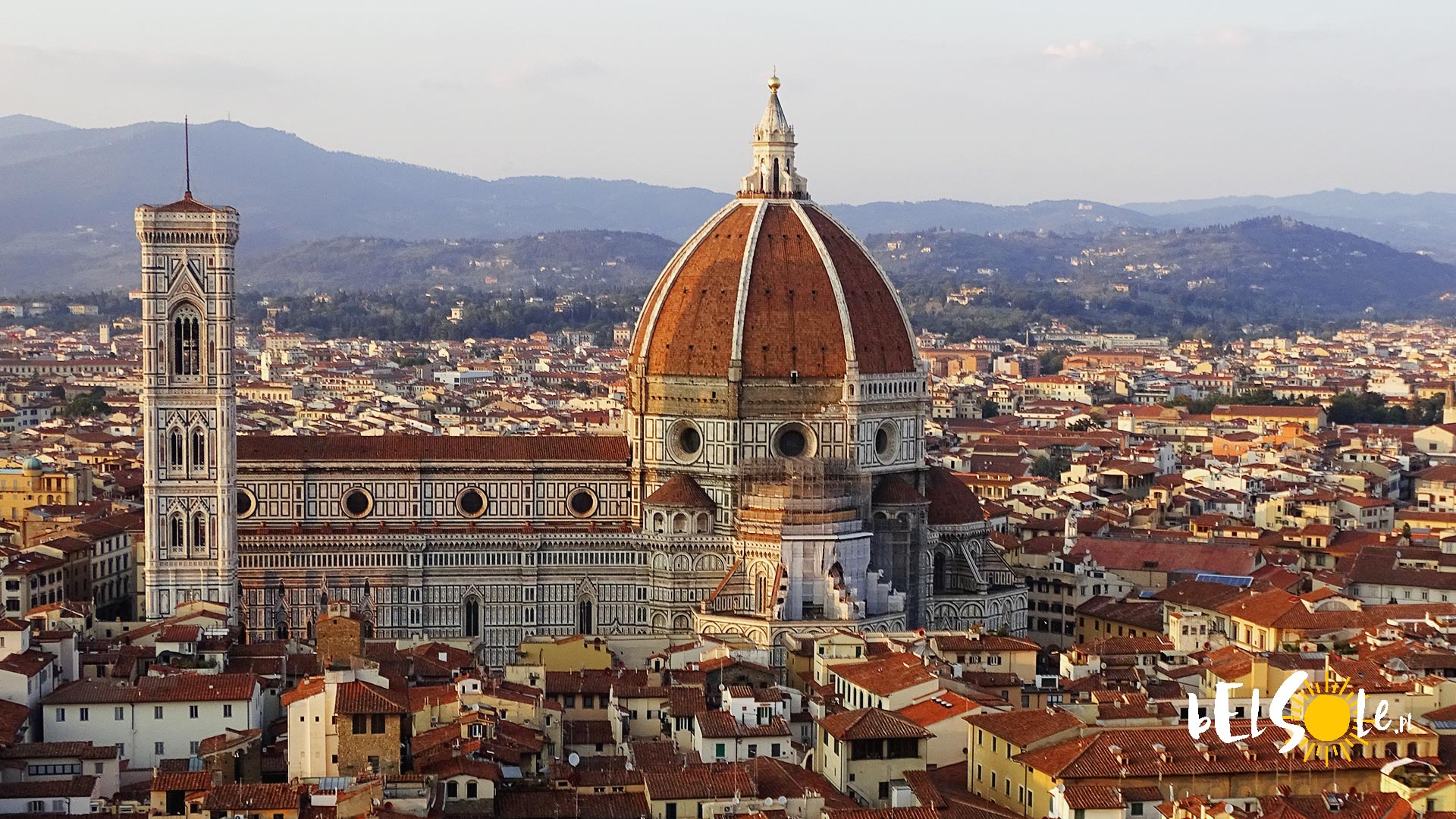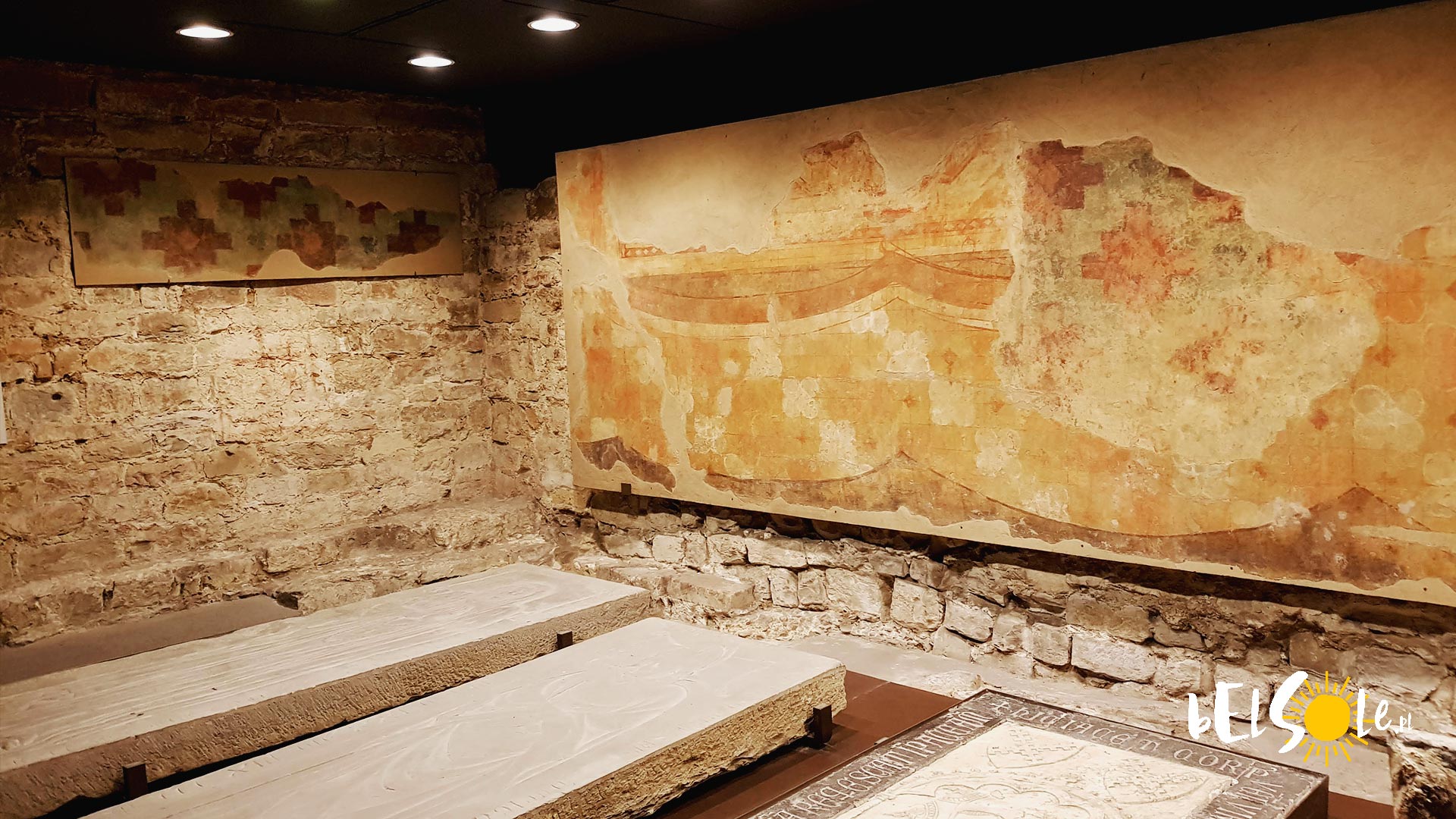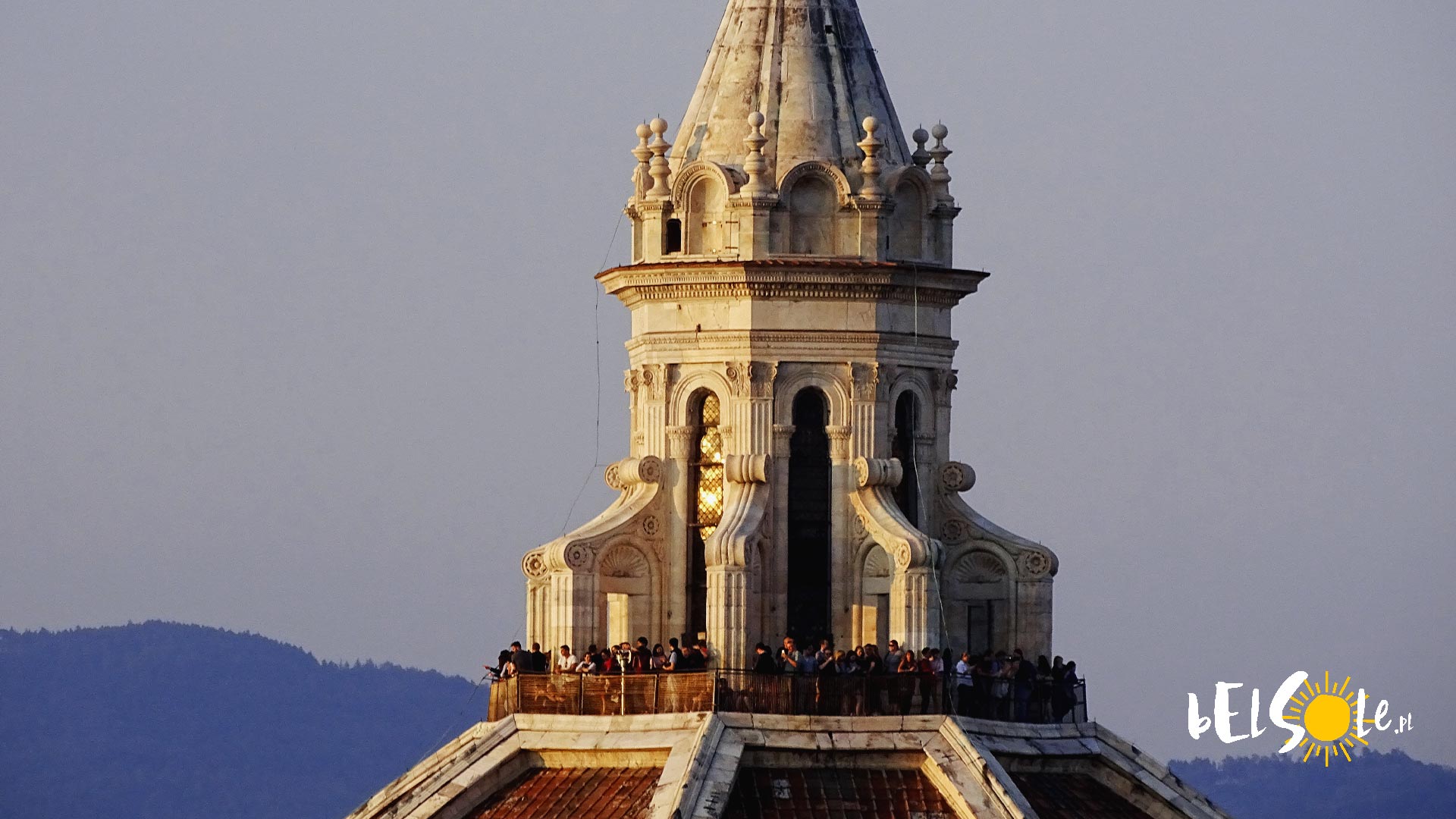A symbol of Florence, visible from most parts of the city, one of the most gorgeous, biggest and tallest cathedrals in the world. It sure looks impressive on photos, and is even more in reality. So, what should you see in Duomo? How to get to the cathedral, where exactly is it located? Here are some of the impressions from our countless trips to the symbol of Florence.
The Florence Cathedral – touring

In the description of the Santa Maria del Fiore Cathedral below, we wanted to focus mostly on the more practical side of information, keeping history and architecture trivia in small doses. We believe, that such an approach ends up being more useful (we’ve obviously included a tiny bit of trivia). If you’re interested in more information about the Florence attractions, here’s our previous article, dedicated to precisely that topic. Let’s start off with the fact, that the ‘cathedral’ consists of many separate objects you can buy a ticket for:
- The insides of the cathedral (the entrance to the main cathedral is free)
- The Cathedral museum (Museo dell’Opera), where most of the art pieces are located in (situated right next to the cathedral)
- Entrance to the Brunelleschi Dome
- Entrance to the Florence Baptistery (next to the cathedral)
- Giotto Bell Tower
- Archeological findings of the Santa Reparata, a church that once (4-5th century) stood where the Florence Cathedral currently stands.

Tickets for the Santa Maria del Fiore Cathedral
You can buy the tickets online or at the cathedral’s. Additionally, you can utilize the Firenze Card, that with the recent ticket price increases, has become an even better deal. A combined ticket for all the aforementioned attractions will set you back 18-20 EUR. You can buy it at https://grandemuseodelduomo.waf.it. Beware of the sponsored search results on google from travel agencies.

You should most certainly make reservations in advance, once in Florence (recently, their site has also allowed reservations, depending on the availability of slots). You can do that in the Museo dell’Opera offices, by the Duomo Piazza. Usually, the next few days are booked, so you should take care of that early during your trip to Florence. There’s also no cancelling or changing your reservation – if you won’t show up, it perishes. You can check the availability at https://grandemuseodelduomo.waf.it .
It’s very important to keep in mind – the ticket is usable for 72 hours, of which the timer starts when you enter your first attraction, or the date of the reservation.
You can only visit each attraction once.
Visiting the cathedral – who is it for?
If we were to rate which of the parts in the Florence Cathedral were the most impressive for us, it’d probably have to be the Brunelleschi Dome and the dell’Opera Museum. The archeological findings of Santa Reparata may be more fit for those more interested in history, while for art lovers, the dell’Opera Museum should do the trick. The best spot for taking photos is the Giotto Bell Tower, from which you can see the Cathedral’s Dome closely.

The queue times can rack up to even an hour sometimes, so it’s wise to pick a good time to visit the cathedral. Work days and months outside of the high season may turn out to be a better idea.
Entering the ‘II Duomo’ takes a form of a longish walk upwards, inside the dome. You’ll be able to see The Last Judgement fresco up close, above the main nave. Be careful, as the walk gets somewhat steep sometimes, and better keep your head lowered. From the top, you’ll be greeted by a magnificent view of the entirety of Florence, apart from its shining cathedral, of course. The way in which the dome itself was built is unclear to this day, we can merely speculate. The method that Brunelleschi used to design the building, was later reutilised over and over by countless architects, and became somewhat of a template for future generations of architecture designers.
The dome and the top of DuomoMuseo dell’Opera is a perfect spot for art lovers. Here, you’ll find most of the sculptures taken out of the cathedral, the original main portal and a miniature copy of the dome’s building prints. From the movie displayed there, you’ll get to know how the dome was most probably built.

The Giotto Bell tower is an equally well known part of the Florence panorama. Getting to the top is deceptively quick and fairly comfy. Thankfully, the queue times are also much shorter than in the case of Duomo. If you’ll be unlucky enough to not find a slot for the dome, you can always visit the bell tower.
The Florence Baptistery (Battistero di San Giovanni) is one of the oldest buildings in the entire city of Florence. It was originally built somewhere between 1059 and 1128, in a Romanesque style. Pay close attention to the beautiful ceiling and to the “Gates of Paradise” (the main gate to the Baptistery). The queue times are usually manageable, so you can leave it for when other spots are too crowded.

The Cathedral’s history
Works on the cathedral started in 1294, on a spot where the Santa Reparata church once stood (in the 4th century). Somewhere between the end of the 13th and the beginning of the 15th century, Florence experienced a peak in the cultural and political growth, which resulted in huge urban development. The first architect to work on the cathedral was Arnolfo di Cambio. What’s interesting is that the new cathedral was being built around an already existing one, in which religious services were still being held up to 1375. After Arnolfo’s death, in 1302, the entire design of the western side changed. Works on the cathedral were slowed down for whooping 50 years, due to a discovery of a relic of Saint Zenobius.

On August 18th, an architecture contest of building the dome got announced. The two main contestants were two master goldsmiths: Lorenzo Ghiberti and Filippo Brunelleschi. Filippo had the support of the House of Medici, and he was the one to win the contest. Lorenzo on the other hand, won the contest in 1401, to create the gates to Baptistery.

The cathedral was put into service in 1436, although not all the works were finished. The upper part of the dome and the light on top were still not ready. The dome’s obviously the most impressive part of the church. The Cathedral’s facade was finished much later, as the last part, in 1887. Although initially, it was fully built based on Arnolfo’s plans, it was later destroyed in 1578. Later, it was Emilio de Fabrisa, whose plans were utilized to build the cathedral. The entire building process lasted over 600 years.

The Cathedral’s architecture
The giant dome’s clearly the part that gets the most attention. It’s absolutely gigantic and inside its walls, is a path that leads all the way up to the light source, situated at the very top.

The cathedral’s facade is finished in a gothic style, with some neo gothic modifications. Here you can read about a similar case of the Milan Cathedral (Duomo di Milano). A big portion of the frontside is made of marble, with numerous decorations and statues alongside it. The block itself is fairly weighty and tough, even for the gothic style. The white marble was brought straight from Carrara, red one from Maremma and the green one from Prato. Above the main entrance, ‘Porta della Mandorla’ and the two side entrances are twelve statues, presenting the 12 Apostles and Virgin Mary with Jesus. The three rose windows are all located above the entrances, in a symmetrical fashion.

The Santa Maria del Fiore cathedral was built in a cross-like design. Above the main altar in the chancel, is the Last Judgement fresco in all its glory, created by Giorgio Vasari and Federico Zuccari.

The three naves, including the main one in the middle, may seem fairly hollow, empty almost, because most of the art pieces that once decorated the inside have been moved to the dell’Opera museum. We highly recommend visiting it, as it fulfills the experience quite nicely.
The Florence Cathedral – map
1 ) Santa Maria Del Fiore entrance
2) San Giovanni Monastery
3) Giotto Belltower
4) The queue for the dome visitations
5) Museo dell’Opera
6) Ticket offices
7) Crypt’s entrance









